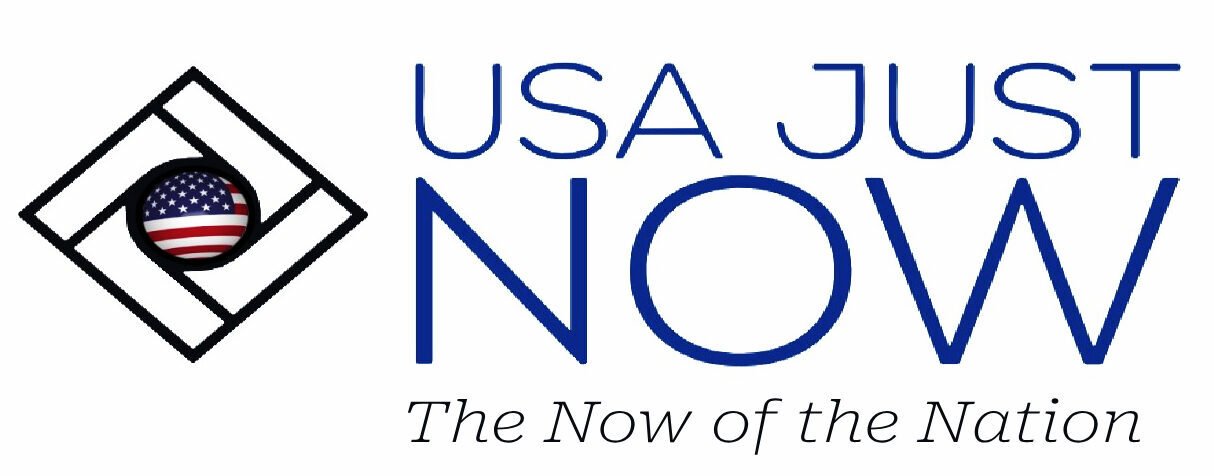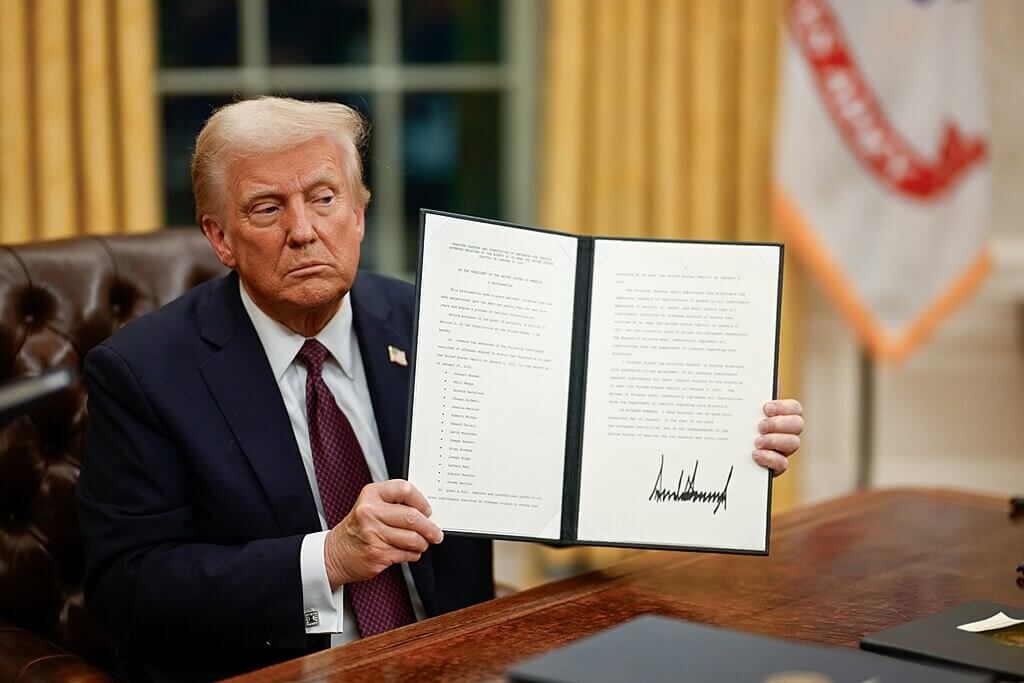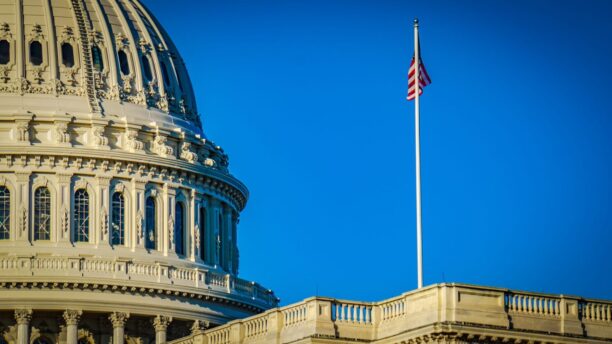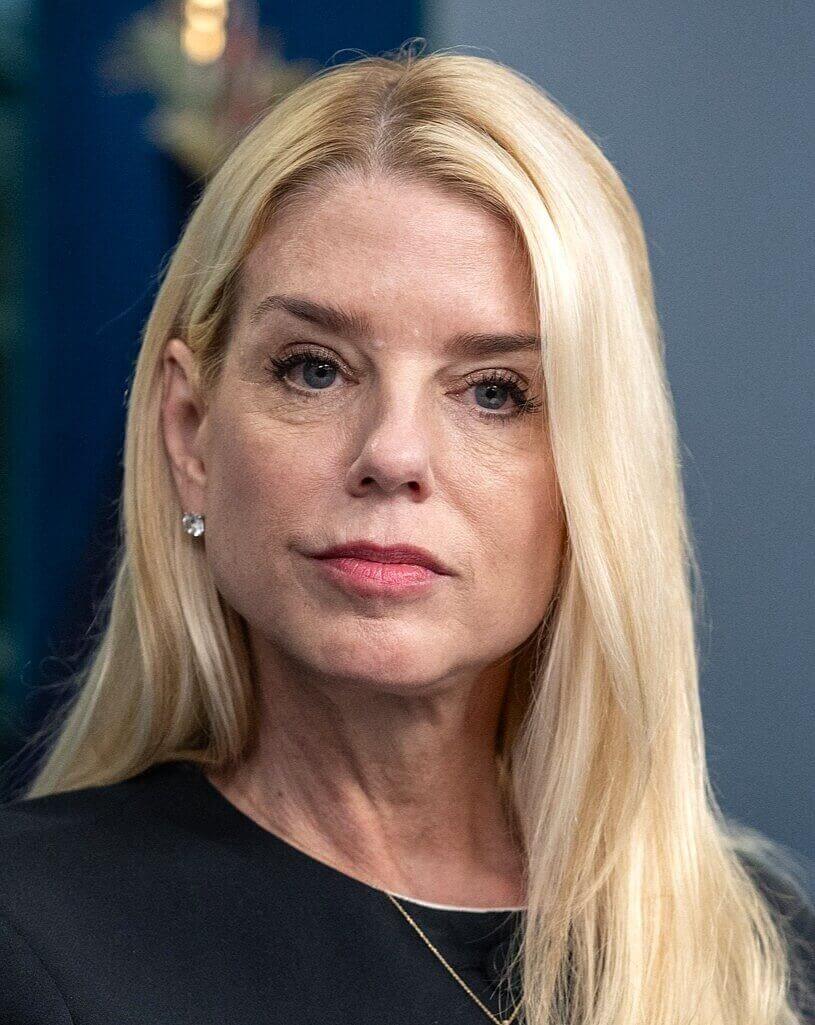Image (file) courtesy: The Trump White House, (President Donald Trump signing executive orders), via Wikimedia Commons
President Trump’s 2025 Executive Orders are driving public and legislative debate across the United States. These executive orders focus on reforming citizenship, altering immigration processes, and reshaping economic policy for 2025.
Major Changes to Birthright Citizenship
One of the most significant of President Trump’s 2025 Executive Orders redefines birthright citizenship, restricting it to those born in the United States to a citizen or lawful permanent resident parent. Legal experts and advocacy groups have challenged the constitutionality of this measure, invoking the Fourteenth Amendment. Courts are now weighing its legality, and, according to recent surveys, the American public is divided, with a majority expressing disapproval of the order since it would dramatically alter a tradition held for more than 150 years.
Immigration and Border Security Directives
The administration’s new executive orders include strict upgrades to border security, such as expanded barriers, tougher asylum rules, and authorization to redirect military resources. According to White House statements, these actions reduce unauthorized crossings, but human rights organizations continue to raise concerns about their humanitarian implications and the broad use of emergency powers to justify enforcement changes. These major reforms are fueling debate about executive authority versus congressional oversight.
H-1B Visa Overhaul and Legal Backlash
This year, President Trump’s 2025 Executive Orders have also upended the H-1B skilled worker visa program by imposing a $100,000 fee per petition, with the stated purpose of protecting U.S. workers and curbing program misuse. The new rule has sparked rapid response from the high-skill tech and academic sectors, which say the prohibition will deter global talent and slow American innovation. Multiple lawsuits have been filed challenging the president’s authority to unilaterally impose such steep fees, and the policy is now being debated in federal court.
Tariffs and Economic Policy Shifts
Additional executive orders have reset tariffs on critical imports, including minerals and pharmaceutical products, to support domestic producers and safeguard national supply chains. While these measures are popular among manufacturing industries and certain labor groups, economists are divided, with some warning about the risk of international retaliation and higher costs for American consumers.
Orders Affecting the Legal Profession
President Trump’s 2025 Executive Orders have for the first time directly targeted specific law firms and legal professionals regarded as administration opponents. Some orders limit access to federal facilities and contracts for select firms, triggering concern about retaliation and the chilling effect on the right to legal representation. Federal courts have responded swiftly, issuing injunctions that cite First Amendment violations, due process issues, and threats to the independence of the judiciary. Legal scholars have compared the situation to historical efforts to blacklist or silence lawyers engaged in government litigation.
Public Opinion and Political Consequences
The American public’s reaction to President Trump’s 2025 Executive Orders is polarized. Polling shows sharp partisan divisions, with most Republicans supporting the president’s directives and most Democrats opposing them—particularly on birthright citizenship and the H-1B visa fee increase. These executive actions are drawing both praise for decisive leadership and criticism for bypassing legislative checks.
Ongoing Legal and Political Developments
The future of President Trump’s 2025 Executive Orders depends on ongoing litigation and possible congressional intervention. With injunctions and challenges underway, much of the immediate impact will be shaped by federal court rulings and how agencies implement or revise policies in response. As these stories evolve, the nation remains deeply engaged with the outcomes and implications of these orders.
Conclusion
President Trump’s 2025 Executive Orders have brought a new phase of transformation to U.S. policy—and sparked some of the most intense legal, economic, and public debates of the year. The responses from courts, lawmakers, industries, and the public will ultimately determine their legacy and long-term impact on American governance.







